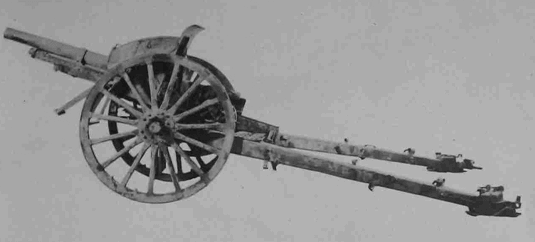
| Year | 1936 |
| Weapon Type | Light Field Gun |
| Origin & Designer | [@designer] |
| Numbers Produced | 261 |
| Crew | 7 |
| Calibre | 75mm (75x424R) |
| Elevation | -8° to +43° |
| Traverse | 50° |
| Breech | Horizontal Sliding Wedge |
| Recoil | Hydropneumatic |
| Gun Sight | Panoramic |
| Gun Mount | [@gun_mounts] |
| Carriage | Split Trail |
| Trailers | [@trailers] |
| Gun Shield | 3mm |
| Armoured Plate | [@armoured_plate] |
| Barrel Length | 2.278mm (L/31) |
| Overall Length | 4.47m |
| Width | 1.78m |
| Height | 1.60m |
| Weight | Weight in Traction: 1.929 kg Weight in Action: 1.106 kg |
| Round Weight | 6.56 kg (HE) |
| Muzzle Velocity | 520 m/s |
| Feed | [@feed] |
| Magazine Capacity | [@magazine_capacity] |
| Practical Rate of Fire | [@practical_rate_of_fire] |
| Rate of Fire | 15 r.p.m. |
| Maximum Rate of Fire | [@maximum_rate_of_fire] |
| Maximum Ceiling | [@maximum_ceiling] |
| Maximum Ground Range | [@maximum_ground_range] |
| Maximum Range | 10.700m |
| Armour Penetration | [@armour_penetration] |
| Traction | Horse Drawn (Six Horses) or Motorised |
| Variants | [@variants] |
| Notes | The Japanese wanted a new field gun which could be issued to infantry and cavalry formations, up to then the type 38 and type 41 were issued in these roles and the IJA wanted one gun to field both infantry and cavalry artillery regiments. Thus was designed with spoked wheels for horse traction and rubber wheels for motorised towing. The gun was not a success and was built in small numbers. |